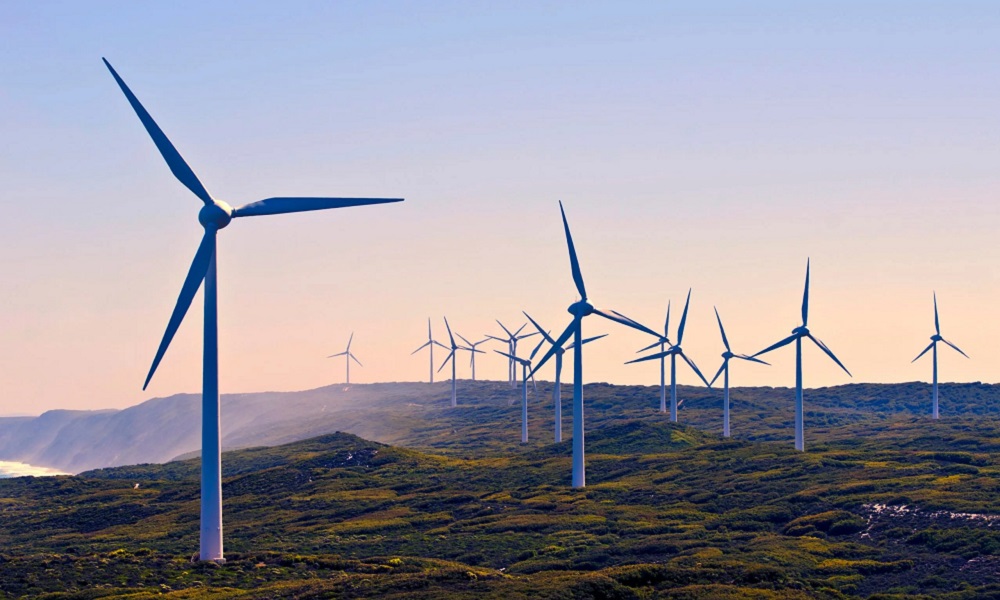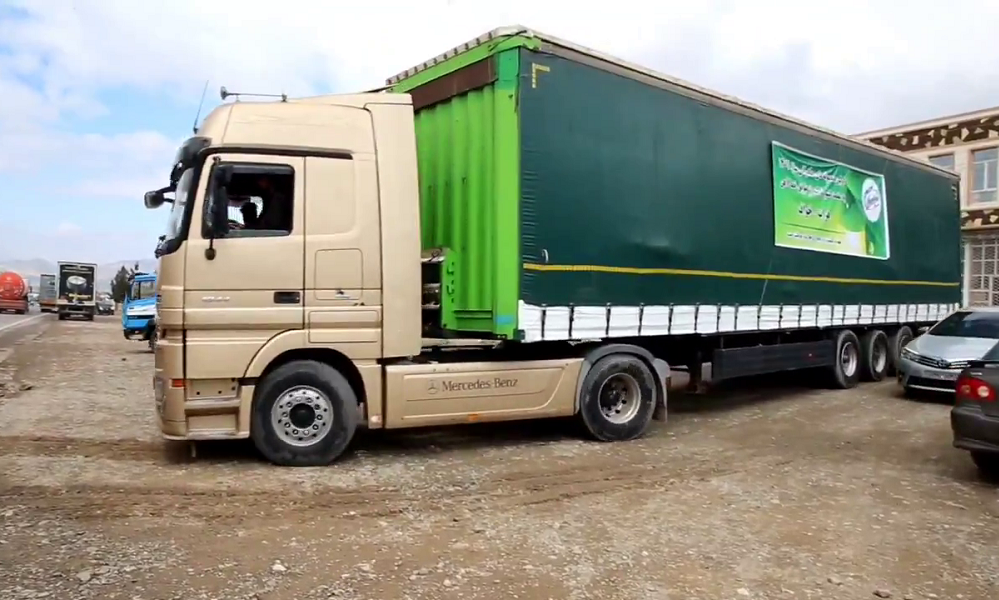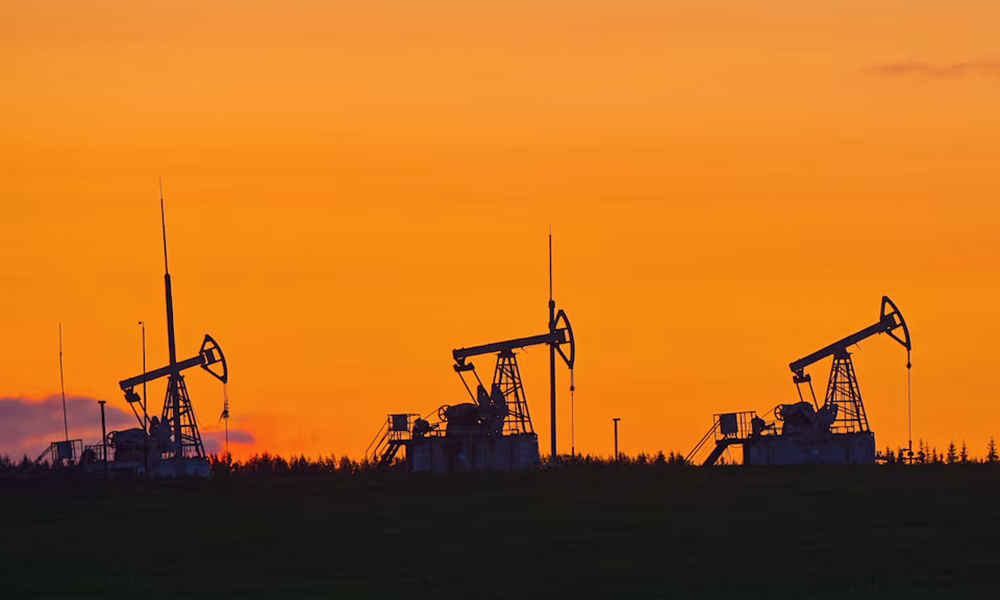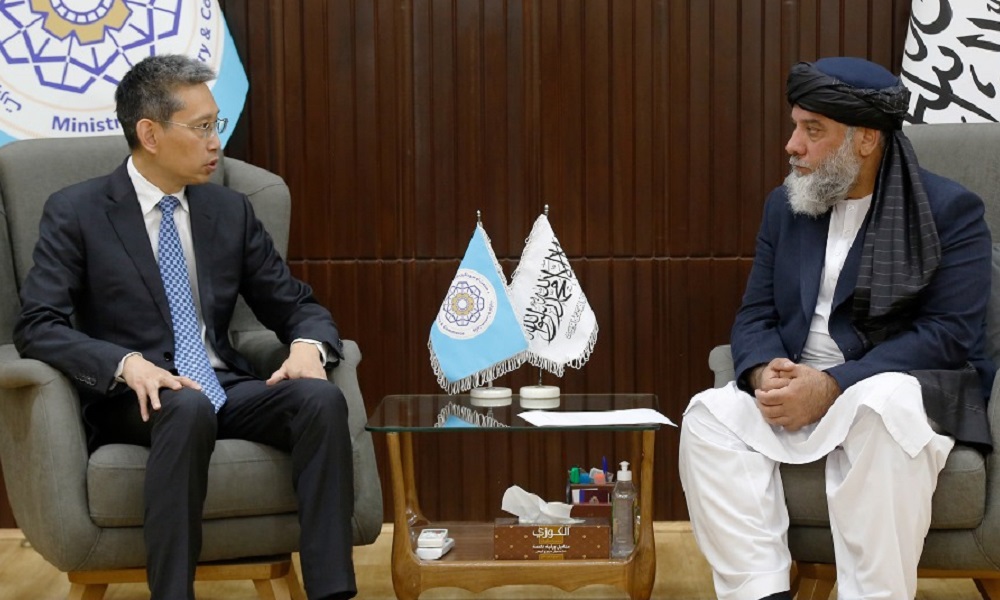Business
Turkish firm ‘moves forward’ with plans to invest in Afghan energy producing sector

The Islamic Emirate’s minister of energy and water met on Sunday with the head of a Turkish construction company in Kabul to discuss investment in the energy production sector.
According to the ministry of energy and water, the company, 77 Insaat, expressed interest in investing in power-producing projects including a wind-generating endeavor that could produce 200 megawatts of electricity in Afghanistan.
The ministry said in a series of tweets that the IEA’s energy and water minister Abdul Latif Mansoor met with Suleyman Ciliv, the head of the company, “and discussed and exchanged ideas about the development of joint cooperation of investment in the energy production projects from different sources.”
At the meeting, Mansoor praised the initiative being taken by the company in Afghanistan and said the implementation of the second phase of the Kajaki Dam project by the company was a valuable achievement for the people of Afghanistan.
Mansoor emphasized the need for investment in energy projects and assured Ciliv that the leadership of the energy and water ministry is committed to cooperating with the company.
“Both parties agreed to sign a cooperation agreement to invest in a 200 megawatts wind power generation project as soon as possible, so that on the basis of this agreement, the practical works of this project will start in the future,” the ministry said.
Energy in Afghanistan is provided by hydropower followed by fossil fuel and solar power but currently more than 50% of electricity is imported from neighboring countries.
Many rural areas do not have access to power, while urban areas are often hampered by severe restrictions.
Afghanistan currently generates over 600 megawatts (MW) of electricity but its imports total over 670 MW more.
The Afghan National Development Strategy has identified alternative energy, such as wind and solar energy, as a high value power source to develop.
Last year the ministry of energy and water identified 16 electricity-generating projects that, once established, will increase power output and help make the country less reliant on its neighbors for this critical commodity.
The ministry said at the time that of these 16, there are 12 thermal and solar power projects that have been identified and proposals have been shared with domestic and foreign investors in the hope of attracting financial backing.
Economists have meanwhile said that if investors can be found to support this sector, and if more electricity is generated, industry will grow.
Power projects ‘prioritized’
In April last year, the IEA’s Economic Commission, chaired by Deputy Prime Minister Mullah Abdul Ghani Baradar, gave orders for various ministries to prioritize projects to generate electricity.
At the time, the commission said after “extensive discussions on all issues that the private sector is prepared to invest in”, it was decided that the generation of electricity should be a priority.
According to the statement, the commission instructed various ministries under the leadership of the ministry of energy and water, to also generate electricity from coal.
A shortage of power has plagued Afghanistan for decades despite it having ample hydropower, coal and fossil fuel resources – as well as potential for solar and wind energy projects.
Over the past few years however, one successful private partnership has emerged – between the Afghan government and Bayat Power, Afghanistan’s largest, Afghan-owned and operated power production company which has the region’s most technologically advanced gas fired electric power plant.
Launched in 2019, this commercial operation provides reliable and affordable electric power to hundreds of thousands of people in Afghanistan.
Located in Sherberghan, in the north of the country, the epicenter of the nation’s gas-rich region, Bayat Power has steadfastly aimed to provide essential power for Afghanistan’s economic growth.
Powered by a Siemens SGT-A45 ‘Fast Power’ turbine, the world’s most advanced mobile gas to energy power solution, phase one of Bayat Power-1’s operations generates up to 44 megawatts of power for Afghan homes and businesses.
To date, Bayat Power has delivered over 700 million kilowatts of domestic power to the Afghan grid. However, Bayat Power hopes to eventually roll out three phases in total that will generate more than 200 megawatts of electricity – enough to serve millions of Afghan residential and commercial clients.
Business
Afghanistan ships first consignment to Europe via Khaf-Herat railway

The press office of the Herat governor has announced the export of Afghanistan’s first shipment via the Khaf-Herat railway to Europe.
According to a statement from the office, the shipment includes 200 tons of dried fruits worth $1.2 million, which were exported to Turkey and Europe through the Khaf-Herat railway in the presence of Islam Jar, the governor of this province, and the Iranian Consul General.
The exported dried fruits in this shipment include pistachios, raisins, almonds, and pine nuts.
The statement added that over the past three months, more than 35,000 tons of goods have been transferred via the Khaf-Herat railway.
Business
Russia’s LPG exports to Afghanistan boom as Europe shuns it
The exports to Afghanistan, the main consumer of Russia’s LPG in the region, rose by 52% for the period to 71,000 tons.

Russia’s exports of liquefied petroleum gas (LPG) to Afghanistan and ex-Soviet states in Central Asia have jumped following introduction of European Union sanctions against Moscow at the end of 2024, industry sources said on Wednesday, Reuters reported.
The European Union’s sanctions against Russia’s LPG over the war in Ukraine took effect on December 20. The restrictions were proposed last year by Poland, one of Russia’s largest LPG importers.
LPG, or propane and butane, is mainly used as fuel for cars, heating and to produce other petrochemicals.
According to the industry sources, railway supplies of LPG from Russia’s plants, including the Kazrosgas joint venture with Kazakhstan, jumped to the region by 80% year on year in January – February to 140,000 metric tons, read the report.
The exports to Afghanistan, the main consumer of Russia’s LPG in the region, rose by 52% for the period to 71,000 tons.
Traders expect great scope for more supplies to Afghanistan, where annual demand for LPG is seen at around 700,000 tons per year.
Business
Azizi and Zhao Xing discuss increasing Afghanistan’s exports to China

Acting Minister of Industry and Commerce Nooruddin Azizi and Zhao Xing, the Chinese Ambassador to Kabul, met on Tuesday and discussed increasing Afghanistan’s exports to China, particularly pine nuts, pomegranates, and precious and semi-precious stones such as nephrite, onyx, lapis lazuli, and talc, the ministry said in a statement.
According to the statement the goal of the meeting was to facilitate direct exports to China in order to reduce transit costs and transportation of Afghan goods, as well as to address the importation of machinery needed for the country.
Azizi and Zhao have agreed to establish a joint working group for further coordination, expanding trade relations, and creating facilities for trade, with the aim of holding regular meetings, the statement read.
-

 International Sports4 days ago
International Sports4 days agoIPL 2025: Sunrisers on a batting rampage; triumph over Rajasthan Royals
-

 Latest News4 days ago
Latest News4 days agoEU says girls’ education crucial for Afghanistan’s long-term prosperity
-

 Sport4 days ago
Sport4 days agoACB names Afghanistan A squad for tri-nation series
-

 Latest News5 days ago
Latest News5 days agoPakistan’s mistakes played significant role in rise of terrorism: Maulana Fazl-ur-Rehman
-

 Latest News4 days ago
Latest News4 days agoUzbekistan sends essential food aid to Afghanistan
-

 International Sports3 days ago
International Sports3 days agoIPL 2025: Last over drama; Ashutosh Sharma clinches win for Delhi Capitals
-

 Sport3 days ago
Sport3 days agoAfghanistan eliminated from Asian Beach Soccer Championship
-

 Regional3 days ago
Regional3 days agoEgypt makes new proposal to restore Gaza truce as Israeli strikes kill 65
























